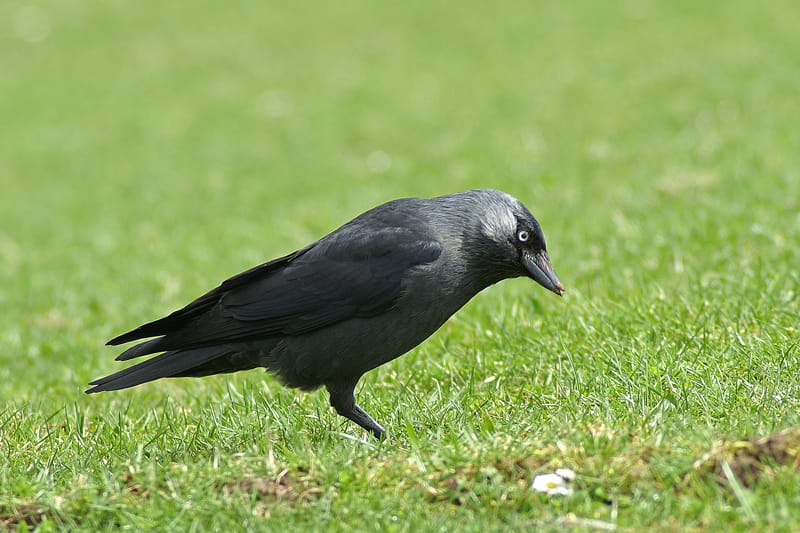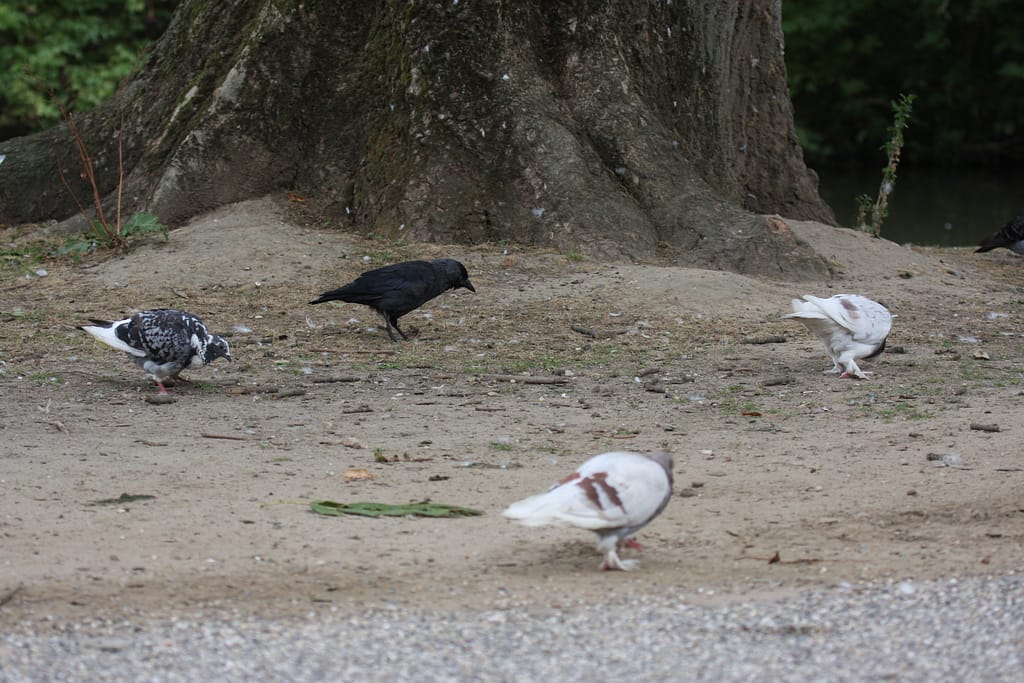Latin name: Corvus monedula
Characteristics:
The plumage of a jackdaw is entirely blackish grey with a silver sheen, particularly in the neck and on the sides of the head. They have striking, light-grey irises and a short, sturdy beak. In flight, they have a somewhat faster wing stroke than crows and rooks, and they often fly in denser groups.
Jackdaws can produce a wide variety of sounds, but most recognisable is the short ‘kya’, which has a higher pitch compared to the other corvids.
Reproduction:
In principle, jackdaws mate for life, just like magpies. Partners are almost inseparable and you can even identify them in a group of foraging jackdaws.
Jackdaws like to breed in close proximity to each other in loosely organised colonies, and they build their nests in the most diverse places. They use cavities in trees, old nest cavities of black woodpeckers or nesting boxes used by the tawny owl, but they also nest in buildings. For example, in chimneys, in holes in walls or under tiles.
Between April and June, a clutch is laid, usually containing 4 eggs, but the number of eggs can vary from 3 to 8. After 17 to 19 days, the eggs hatch and the chicks are raised in the nest for 30 to 35 days. After flying out, the young are fed by their parents for about 4 weeks.
Diet:
Jackdaws seek their food mainly on the ground, and they are not picky. They eat insects, snails, worms, buds, seeds, and berries, as well as carcasses. In addition, jackdaws feast on food that people leave behind, as we also see within Tapijn.

